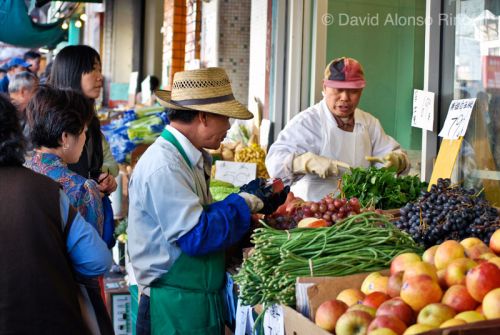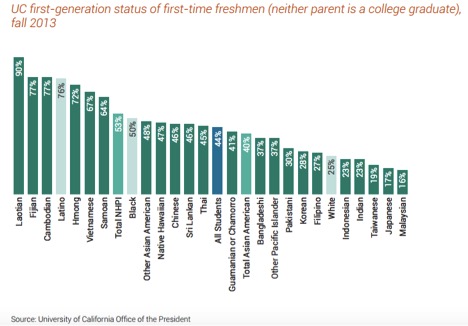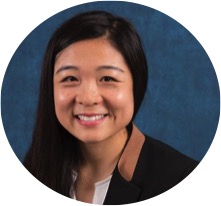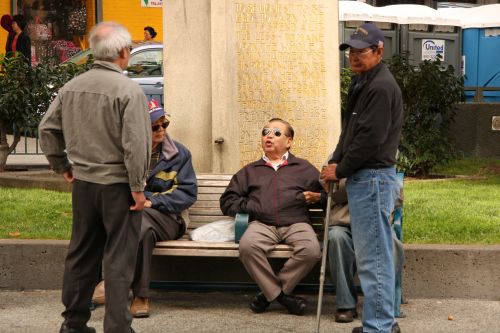BY TRACEY LAM AND JONATHAN HUI
“If you say ‘Asian,’ what pops into your head? They think we’re all supposed to be doctors, you know? Or they think we come from a good, rich family. But we don’t.”[i]
These words are from Pass or Fail in Cambodia Town, a documentary about the true stories of Cambodian Americans in Long Beach, California. Shameka is one of them, and her situation is not uncommon among Asian Americans in the United States. Shameka’s family fled the Khmer Rouge in Cambodia and resettled in the United States as refugees. Shameka is pregnant, may not graduate high school, does not have a permanent home, and cannot communicate with her mother. Many others share her story.
On aggregate, Asian and Pacific Islander Americans (APIA) are indeed the best-educated, highest-income, lowest-crime racial group in America.[ii] In less than one generation, APIAs went from being despised as dirty, uneducated “Yellow Peril” laborers[iii] to touted as the shining example for all minority groups in the US to follow.[iv]
However, behind the “model minority” statistics is a more nuanced picture, mirrored by every other racial group in America. Low-income APIA communities and first-generation APIAs struggle in education, income, and crime at levels similar to low-income and first-generation individuals belonging to other racial groups. Complicating policymaking is the heterogeneity of the group. The APIA racial group created by the US Government for census purposes encompasses more than forty distinct ethnic groups and over one hundred language groups. It contains some of the best and least educated ethnic groups in America[v] [vi] and the richest and poorest[vii] [viii] [ix], reflecting the range of immigration experiences of individuals within the APIA community.[x] For every well-to-do APIA techie, doctor, and banker, there is also a poor APIA manicurist, launderer, and cab driver.

Not every Asian American is a lawyer or a doctor, but many are just trying to make it work. Photo Credit: David Alonso Rincon, Flickr
APIAs comprise almost 6 percent of the US population and are the fastest-growing racial group in the country.[xi] Over 74 percent are foreign born.[xii] In 1965, Congress passed the Immigration and Nationality Act, which ended the 1882 Chinese Exclusion Act and reinstated Asians’ rights to immigrate to America and obtain US citizenship. Asians have since overtaken Hispanics as the largest group of new immigrants to the US.[xiii] The wealthiest APIAs are often “employment preference:”[xiv] highly educated H-1B visa immigrants from this post-1965 group and their offspring.[xv] The poorest are often refugees, low-income immigrants, and their offspring.[xvi] [xvii]
The issues the APIA community face are unnoticed and poorly understood, largely due to obstruction by the model minority myth.[xviii] [xix] Until 2007, Asian American Native American Pacific Islander serving institutions (AANAPISI) were ineligible for federal funding and designation as minority-serving institutions[xx], and APIA students were excluded from federal grants and assistance programs.[xxi] To this day, APIA students remain underserved in federal programs[xxii] and routinely excluded from many non-governmental public and private sector assistance programs.[xxiii]
Asian privilege undoubtedly exists. Many attribute APIA successes to cultural values surrounding education, family, and hard work. However, a quick glance at disaggregated data on both APIAs and Asians and Pacific Islanders in countries of origin shows that culture does not lead to success.[xxiv] If race and culture are not responsible for the success of APIAs who have “made” it, we cannot continue to allow race and culture to hold down APIAs in need.
Significantly more APIAs live in poverty than the US average[xxv], with more than two dozen APIA ethnic groups having above-average numbers of poor people.[xxvi] APIAs experience more workplace discrimination than any other racial group but file only 3 percent of the Equal Employment Opportunity Commission employment discrimination complaints.[xxvii] There are 1.5 million undocumented Asian immigrants in America[xxviii], many of whom are exploited.[xxix] [xxx] Though there are many challenges facing the APIA community, we focus on three: refugee resettlement, health care, and education.
Refugee Resettlement
An APIA community organizer recalls with agony the experience of his grandparents and parents:
Two million people perished in genocide, in the most atrocious ways. Babies being bashed against trees. Men being kidnapped in the middle of the night, blindfolded, thrown off cliffs. Some of the most atrocious things, that you can’t even imagine, happened in our country. I think it’s kind of unfair for people to say that we need to get over it, because those things you never get over.[xxxi]
When refugees arrive in the US from Asia, they have lived through war, genocide, extreme persecution, and the indigence of refugee camps. Since 1975, the US has accepted a large number of Asian refugees, first from Cambodia, Laos, and Vietnam[xxxii], and in the last decade from Bhutan, Nepal, and Myanmar.[xxxiii] [xxxiv] These more than 1.3 million refugees receive few of the services they need to make a life in the US.[xxxv]
Upon arrival, each refugee receives just thirty to ninety days of assistance from a US government partner and five additional months from the government, for a measly maximum of eight months.[xxxvi] [xxxvii] After this, refugees must fend for and navigate the social services system themselves, tasks that are difficult for many Americans but become effectively impossible for refugees who must also cope with low English proficiency, lack of a support network, and mental health issues.
Services provided to refugees are inadequate to meet their needs. Refugees and their offspring have some of the highest dropout rates and lowest high school graduation rates of any group in the country.[xxxviii] [xxxix] In cities with large refugee populations, refugees and their offspring have some of the highest youth arrest rates of any group.[xl] Refugees are among the poorest ethnic groups in the country, with poverty rates far surpassing, sometimes more than tripling, the US national average.[xli] Many continue to struggle with undiagnosed and untreated post-traumatic stress disorder (PTSD), with rates reaching more than 60 percent in some communities.[xlii] Though refugees are highly motivated to seek employment and become economically self-sufficient, lack of English-language ability and education relegates them to positions with no potential for improving their socioeconomic status.
Ros, a Cambodian refugee who resettled in Lowell, MA, reflects, “[Refugees] who were my age who are in prison today were affected by their youth. To see death and mutilation and then living in the inner-city dealing with racism and drugs and violence—it has to affect you.”[xliii] For refugees to adapt successfully to life in America, caseworker support must be made long-term, and English as a Second Language (ESL) training must improve. Because they cannot rely on adequate support from the government or their new communities, refugees have grown dependent on self-help community organizations created and run by the refugees themselves.[xliv] These organizations play a critical role in helping refugees adjust to life in America.[xlv] However, without the knowhow to apply for funding, these groups receive no assistance, relying instead on small, five to ten-dollar contributions from each refugee.[xlvi] If refugees are to lean on self-help community organizations, these need to be strengthened with capacity-building support, adequate funding, and formal recognition, so that self-help organizations can both support their communities and advocate for them.
These issues are still relevant for many Cambodian, Laotian, and Vietnamese refugees who fled in the aftermath of the Vietnam War. They are especially salient for the more than 100,000 Burmese and Bhutanese refugees who have resettled in the US in the last decade. The 2012 Pew Study on APIAs, like most US coverage of APIAs, perpetuates the model minority myth of the highest-income, best-educated, lowest-crime racial group and excludes any analysis on smaller APIA ethnic groups, including those of most refugees.
Disparities in Health Outcomes
Health care experts often point to APIAs as the “healthy minority,” citing high life expectancy and low obesity rates. While true in many cases, this label masks disparities in health outcomes within the APIA community; superior health outcomes are not uniform across all APIA subgroups. For many APIAs, cultural and language barriers have led to disparities in health literacy, access, and insurance provision[xlvii]. While health outcomes across all APIA subgroups are still better than those of other racial groups, the healthy minority stereotype hides the true need for health care services for specific APIA populations.
The healthy minority stereotype has led to a belief that APIAs generally have excellent access to health insurance. Many associate the low unemployment rate among APIAs with health insurance access, believing that higher employment rates lead to insurance. The reality is that many APIAs are in part-time, low-wage jobs that do not offer insurance. In fact, only 6 percent of APIAs receive employer-sponsored health insurance, compared to 26 percent of all Americans.[xlviii]
Some APIAs are also reluctant to seek medical help because of language and cultural barriers.[xlix] As opposed to American-born APIAs who are more familiar with Western medical practices, many first-generation APIAs lack the language ability to communicate with their health care providers and do not share the same views toward medical care. Many immigrants, particularly the elderly, have found that Western medicine ignores the norms and practices of Eastern medicine. They therefore become less likely to seek health care and opt for self-medication and treatment or unregulated alternative medical practices.[l] Even when they do seek help, immigrants with limited English proficiency are also less likely to ask for information or advice about their conditions.[li]
These cultural and language barriers have left many APIAs without regular access to health care, even for those with health insurance.[lii] The reluctance to seek medical assistance has also led to disparities in health literacy. Many APIA subgroups rank lower than other groups in terms of understanding of important practices in health care. For example, white women are more than twice as likely to understand the need for regular mammograms as Korean American women are.[liii] Deficient health literacy prevents many from seeking the help they need and receiving preventive care.
False Picture of Academic Achievement
The picture of Asian children as the first to answer a question in class or receive the highest grade on a test is common. We see it in the media, in conversation, even in our own educational experiences. However, this stereotype—however flattering to some—paints a false picture of academic success for all APIAs. It hides the reality that many APIAs living in poverty face barriers to access quality schools, that many first-generation APIAs struggle to learn English, or that many do not know how to navigate the American higher education system. APIAs struggling in school risk being ignored, simply because they are conflated with their high-performing APIA peers.
The model minority stereotype often refers to APIA families that are well educated, have high household incomes, and have stable jobs. However, the reality of poverty for many APIA subgroups means they face similar challenges to many other high-poverty communities. Communities with concentrations of high-poverty APIA groups, such as Shameka’s in Long Beach, have school systems performing far below state standards, plagued with meager graduation rates, low test scores, and poor access to higher education. Shameka’s story is not uncommon; she is struggling to receive the academic and social-emotional support she needs, but she and others like her are often forgotten.
Only around 60 percent of Cambodian and Thai Americans possess at least a high school degree, compared to the national average of 85 percent.[liv] [lv] In schools themselves, more Vietnamese and Thai Americans are considered Limited English Proficient (LEP) than other APIAs or Latinos. Many LEP APIAs are also unable to continue ESL once they begin working, an almost inevitable reality for those just trying to survive.[lvi] When services are allocated, however, these APIA populations are ignored because of the relative success of their peers. Schools associate APIAs with superior academic achievement, leaving many LEP and first-generation, often poor, APIA students without adequate access to academic, English language, and social-emotional support.
Contrary to the model minority myth, many APIAs are the first in their family to attend college (See Figure 1).[lvii] In these communities, however, there is little social and academic support to help students adjust to higher education, and many drop out, having incurred significant debt. On college campuses, services tailored toward APIAs are not focused on academic support, but social or cultural aspects, meaning that many APIA students struggling academically may find themselves marginalized within the APIA community itself.

In the University of California system, more than 70% of students from some APIA subgroups are first-generation college students.
The model minority myth has also perpetuated a stereotype that Asian students are often focused on academics at the expense of other aspects of education like social-emotional learning. The reality is that social-emotional support needs to be prioritized in many APIA communities to assist students in adjusting to school. Just as many newcomer high schools, which are available to immigrants in some cities, provide wraparound services for newly arrived immigrants, our public high schools and colleges must provide similar services to support first-generation APIA students, especially those coming from high-poverty areas. The academic success of some APIAs cannot represent the entire APIA community; rather, services need to be provided to subgroups of APIAs—particularly first-generation immigrants, LEPs, refugees, and those living in high-poverty —that desperately need social and emotional support to access and adjust to high-quality education.
Recommendations
We must build comprehensive support systems in targeted APIA communities to address the issues plaguing the APIA community. These systems must include extensive support for refugees and their families, increased information and access to health care, and socio-emotional and academic support for youth. They can be channeled through schools, community centers, churches, and neighborhood organizations, focusing particularly on cities with significant low-income, immigrant, and refugee APIA populations. Special attention should be paid to refugee communities in the West and Northeast, where most Southeast Asian refugees have resettled, and in the South and Midwest, where most Burmese and Bhutanese refugees are settling. Only by providing a holistic system of services can we ensure a generation of APIAs who can finally fully access their rights as participatory members of civil society and receive the opportunities they deserve as Americans.
Undergirding any effective intervention is a proper understanding of the challenges APIAs face. This is critical for specific APIA subgroups and individuals, many for whom little data exists. Blanket policies have done little to help the APIAs most in need. A low-income Tongan student faces a different set of circumstances than a Bhutanese refugee, but because both are grouped under the “Other Asian” category during US data collection, little is known about either group. Disaggregated data must be collected so that scholars and policy makers have access to information that is accurate and representative of APIA diversity. This is critical to focus on the needs of specific communities and ensure they retain their individual characteristics without being generalized simply as “Asian American.”
While most Americans are largely unaware of the challenges facing the APIA community, it is more disturbing that many APIAs remain oblivious as well.[lix] [lx] APIAs must become aware of these issues and not subscribe to the model minority myth. However, the myth cannot undo itself. We have an opportunity to reframe the conversation and focus on the actual needs of many Americans who still lack access to health care, a quality education, and support to adjust to life in the US. These are not APIA issues—they are American ones, and Americans must work together to ensure that stereotypes do not undermine the wellbeing of fellow citizens who are struggling but are often overlooked.


[i] “Pass or Fail in Cambodia Town,” in America by the Numbers, PBS, 7 November 2014. http://www.pbs.org/video/2365363645/
[ii] Paul Taylor, ed., “The Rise of Asian Americans,” Pew Social Demographic Trends Project (Pew Research Center: 2013). http://www.pewsocialtrends.org/2012/06/19/the-rise-of-asian-americans/
[iii] William Pettersen, “Success Story, Japanese-American Style,” New York Times, 9 January 1966. http://inside.sfuhs.org/dept/history/US_History_reader/Chapter14/modelminority.pdf
[iv] “Success Story of One Minority Group in U.S.,” U.S. News & World Report, 26 December 1966. http://www.dartmouth.edu/~hist32/Hist33/US%20News%20&%20World%20Report.pdf
[v] “Status Dropout Rates,” National Center for Education Statistics, April 2015, accessed 10 February 2016. http://nces.edu.gov/programs/coe/indicator_coj.asp.
[vi] Chia Youyee Vang and Monica Mong Trieu, “Invisible Newcomers: Refugees from Burma/Myanmar and Bhutan in the United States,” Asian & Pacific Islander American Scholarship Fund, 2014, 23. http://apiasf.org/research/APIASF_Burma_Bhutan_Report.pdf
[vii] Suzanne Macartney, Alemayehu Bishaw, and Kayla Fontenot, “Poverty Rates for Selected Detailed Race and Hispanic Groups by State and Place: 2007-2011,” U.S. Department of Commerce, February 2013, accessed 10 February 2016. https://www.census.gov/prod/2013pubs/acsbr11-17.pdf
[viii] Taylor, “Rise of Asian Americans,” 2, 6-7, 25. http://www.pewsocialtrends.org/2012/06/19/the-rise-of-asian-americans/
[ix] “Critical Issues Facing Asian Americans and Pacific Islanders,” White House Initiative on Asian Americans and Pacific Islanders, accessed 10 February 2016, https://www.whitehouse.gov/administration/eop/aapi/data/critical-issues.
[x] Asian & Pacific Islander American Scholarship Fund (APIASF), “Asian American and Pacific Islander Community STEM Focus,” (briefing presented to National Defense Industrial Association STEM Workforce Division, October 2009). http://www.ndia.org/Divisions/Divisions/STEM/Documents/PastEvents/October%208-9,%202009/Horikoshi_NDIA.STEMCommittee.10.2009.pdf
[xi] Taylor, “Rise of Asian Americans,” preface, v. http://www.pewsocialtrends.org/2012/06/19/the-rise-of-asian-americans/
[xii] Taylor, “Rise of Asian Americans,” 1. http://www.pewsocialtrends.org/2012/06/19/the-rise-of-asian-americans/
[xiii] Taylor, “Rise of Asian Americans,” 1. http://www.pewsocialtrends.org/2012/06/19/the-rise-of-asian-americans/
[xiv] Taylor, “Rise of Asian Americans,” 1. http://www.pewsocialtrends.org/2012/06/19/the-rise-of-asian-americans/
[xv] Sanam Malik, “Asian Immigrants in the United States Today,” Center for American Progress, 21 May 2015. https://www.americanprogress.org/issues/immigration/news/2015/05/21/113690/asian-immigrants-in-the-unites-states-today/
[xvi] Malik, “Asian Immigrants in the United States.” https://www.americanprogress.org/issues/immigration/news/2015/05/21/113690/asian-immigrants-in-the-unites-states-today/
[xvii] Josh Ishimatsu, “Spotlight: Asian American & Pacific Islander Poverty,” National Coalition for Asian Pacific American Community Development, 17 June 2013. http://nationalcapacd.org/spotlight-asian-american-and-pacific-islander-poverty-demographic-profile
[xviii] Nicholas D. Hartlep, The Model Minority Stereotype: Demystifying Asian American Success (Information Age Publishing, 2013). http://www.amazon.com/The-Model-Minority-Stereotype-Demystifying/dp/1623963583
[xix] Vang and Trieu, “Invisible Newcomers,” 36. http://apiasf.org/research/APIASF_Burma_Bhutan_Report.pdf
[xx] APIASF, “AAPI Community STEM Focus.” http://www.ndia.org/Divisions/Divisions/STEM/Documents/PastEvents/October%208-9,%202009/Horikoshi_NDIA.STEMCommittee.10.2009.pdf
[xxi] Wendy Ng, Encyclopedia of Asian American Issues Today Volume 1, ed. Edith Wen-Chu Chen and Grace J. Yoo (Greenwood, 2009), 221-225. http://www.amazon.com/Encyclopedia-Asian-American-Issues-volumes/dp/0313347492
[xxii] “About,” White House Initiative on Asian Americans and Pacific Islanders, accessed 4 January 2016, https://www.whitehouse.gov/administration/eop/aapi/about.
[xxiii] APIASF, “AAPI Community STEM Focus.” http://www.ndia.org/Divisions/Divisions/STEM/Documents/PastEvents/October%208-9,%202009/Horikoshi_NDIA.STEMCommittee.10.2009.pdf
[xxiv] Janelle S. Wong, “The Source of the ‘Asian Advantage’ Isn’t Asian Values,” NBC News, 13 October 2015, accessed 10 February 2016. http://www.nbcnews.com/news/asian-america/editorial-source-asian-advantage-isnt-asian-values-n443526
[xxv] National Commission on Asian American and Pacific Islander Research in Education (CARE), “Facts, Not Fiction: Setting the Record Straight,” College Board, 2008, 21. https://secure-media.collegeboard.org/digitalServices/pdf/professionals/asian-americans-and-pacific-islanders-facts-not-fiction.pdf
[xxvi] Ishimatsu, “Spotlight: AAPI Poverty,” 1. http://nationalcapacd.org/spotlight-asian-american-and-pacific-islander-poverty-demographic-profile
[xxvii] U.S. Equal Employment Opportunity Commission, “New Gallup Poll on Employment Discrimination Shows Progress, Problems 40 Years After Founding of EEOC,” 8 December 2005.http://www.eeoc.gov/eeoc/newsroom/release/12-8-05.cfm.
[xxviii] Migration Policy Institute, “Profile of the Unauthorized Population: United States,” accessed 4 January 2016. http://www.migrationpolicy.org/data/unauthorized-immigrant-population/state/US
[xxix] Malik, “Asian Immigrants in the United States.” https://www.americanprogress.org/issues/immigration/news/2015/05/21/113690/asian-immigrants-in-the-unites-states-today/
[xxx] “Rights to Survival & Mobility: An Anti-Trafficking Activist’s Agenda,” National Asian Pacific American Women’s Forum, 2009, Executive Summary, xi.
[xxxi] “Pass or Fail in Cambodia Town.” http://www.pbs.org/video/2365363645/
[xxxii] “Refugee Admissions Program for East Asia,” Bureau of Population, Refugees, and Migration of the U.S. Department of State, 23 May 2014. http://www.state.gov/j/prm/releases/onepagers/228693.htm
[xxxiii] “Refugee Admissions Program for Near East and South Asia,” Bureau of Population, Refugees, and Migration of the U.S. Department of State, 23 May 2014. http://www.state.gov/j/prm/releases/onepagers/228691.htm
[xxxiv] “Refugee Admissions Statistics,” Bureau of Population, Refugees, and Migration of the U.S. Department of State, FY2007 to FY2013. http://www.state.gov/j/prm/releases/statistics/
[xxxv] “Refugee Admissions Program for East Asia.” http://www.state.gov/j/prm/releases/onepagers/228693.htm
[xxxvi] “Refugee Admissions Reception & Placement Program,” Bureau of Population, Refugees, and Migration of the U.S. Department of State, 23 May 2014. http://www.state.gov/j/prm/releases/onepagers/228696.htm
[xxxvii] Vang and Trieu, “Invisible Newcomers,” 13-14, 24. http://apiasf.org/research/APIASF_Burma_Bhutan_Report.pdf
[xxxviii] Vang and Trieu, “Invisible Newcomers,” 6-7. http://apiasf.org/research/APIASF_Burma_Bhutan_Report.pdf
[xxxix] Karthick Ramakrishnan and Farah Z. Ahmad, “Education,” in State of Asian Americans and Pacific Islanders series, Center for American Progress, 23 April 2014, 4. https://www.americanprogress.org/wp-content/uploads/2014/04/AAPI-Education.pdf
[xl] Anh Ton, “Study Finds High Poverty, Arrest Rates Among Some Asian American Males,” Asian Philanthropy Forum, 2 July 2013. http://www.asianphilanthropyforum.org/study-finds-high-poverty-incarceration-rates-among-some-asian-american-males/
[xli] Vang and Trieu, “Invisible Newcomers,” 7. http://apiasf.org/research/APIASF_Burma_Bhutan_Report.pdf
[xlii] Justine Calma, “Forty Years After Resettlement, Thousands of Southeast Asian Refugees Face Deportation,” NBC News, 23 November 2015, accessed 4 January 2016. http://www.nbcnews.com/news/asian-america/forty-years-after-resettlement-thousands-southeast-asian-refugees-face-deportation-n466376
[xliii] Calma, “Forty Years After Resettlement.” http://www.nbcnews.com/news/asian-america/forty-years-after-resettlement-thousands-southeast-asian-refugees-face-deportation-n466376
[xliv] Vang and Trieu, “Invisible Newcomers,” 7. http://apiasf.org/research/APIASF_Burma_Bhutan_Report.pdf
[xlv] Vang and Trieu, “Invisible Newcomers,” 7. http://apiasf.org/research/APIASF_Burma_Bhutan_Report.pdf
[xlvi] Vang and Trieu, “Invisible Newcomers,” 24-25. http://apiasf.org/research/APIASF_Burma_Bhutan_Report.pdf
[xlvii] Kaiser Family Foundation, “Health Coverage and Access to Care Among Asian Americans, Native Hawaiians and Pacific Islanders,” April 2008. https://kaiserfamilyfoundation.files.wordpress.com/2013/01/7745.pdf
[xlviii]Wooksoo Kim and Robert Keefe, “Barriers to Healthcare Among Asian Americans,” Social Work in Public Health, May 2010. https://www.researchgate.net/profile/Wooksoo_Kim/publication/44576699_Barriers_to_healthcare_among_Asian_Americans/links/544565e60cf2f14fb80efc96.pdf
[xlix]Wooksoo Kim and Robert Keefe, “Barriers to Healthcare Among Asian Americans.”
[l]Wooksoo Kim and Robert Keefe, “Barriers to Healthcare Among Asian Americans,” 289.
[li] Alexander Green et al., “Interpreter Services, Language Concordance, and Health Care Quality. Experiences of Asian Americans with Limited English Proficiency,” Journal of General Internal Medicine. no. 11 (2005): 1050-6. https://www.researchgate.net/publication/7460570_Interpreter_Services_Language_Concordance_and_Health_Care_Quality_Experiences_of_Asian_Americans_with_Limited_English_Proficiency
[lii] Kaiser Family Foundation, “Health Coverage and Access to Care Among Asian Americans, Native Hawaiians and Pacific Islanders,” April 2008. https://kaiserfamilyfoundation.files.wordpress.com/2013/01/7745.pdf
[liii] Wooksoo Kim and Robert Keefe. “Barriers to Healthcare Among Asian Americans,” 290.
[liv] Campaign for College Opportunity, “The State of Higher Education in California: Asian Americans, Native Hawaiians and Pacific Islanders,” September 2015. 26. http://collegecampaign.org/wp-content/uploads/2015/09/2015-State-of-Higher-Education_AANHPI2.pdf
[lv] “Education Policies,” Southeast Asian Resource Action Center, accessed January 2016. http://www.searac.org/content/education
[lvi] Vang and Trieu, “Invisible Newcomers,” 24. http://apiasf.org/research/APIASF_Burma_Bhutan_Report.pdfThe High Cost of the Model Minority Myth for Asian & Pacific Islander Americansents. Perhaps this is behind the group’be it con
[lvii] Campaign for College Opportunity, “The State of Higher Education in California,” 33.
[lviii] Campaign for College Opportunity, “The State of Higher Education in California,” 33.
[lix] Julianne Hing, “Asian Americans Respond to Pew: We’re Not Your Model Minority,” Color Lines, 21 June 2012, accessed 10 February 2016. http://www.colorlines.com/articles/asian-americans-respond-pew-were-not-your-model-minority
[lx] Huizhong Wu, “The ‘model minority’ myth: Why Asian-American poverty goes unseen,” Mashable, 14 December 2015. http://mashable.com/2015/12/14/asian-american-poverty/#2Iw3V52Enqqs

